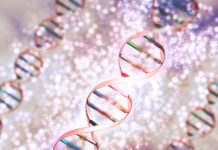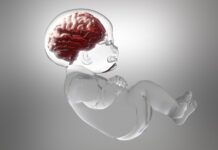A toddler’s brain is akin to a hyperactive sponge, soaking up all it can from the world to get ready for the future.
You only have to watch a toddler mastering the use of an iPad in less time than the average adult to realize that they have a staggering capacity to absorb information and learn new skills. This is because their brains have nearly twice as many synapses, or connections, and are designed to be highly flexible, allowing new pathways to be created constantly.
A newborn’s brain is only 25 percent developed, and during the first few years it changes and grows rapidly. This is why experiences during this time, when the brain is twice as active, have a profound and lasting effect on its structure, function, and performance.
A newborn’s brain is only a quarter the size of an adult’s, but will grow to 80 percent of adult size by three years old.
Over the past 10 years, cognitive science has made great strides in uncovering the mysteries of brain development during the first years of life. Scientists have discovered that the parts of the toddler brain that are most active are the same as those operating in an adult while engrossed in a movie.
This suggests that toddlers view the world as we see a movie— with excitement and enthusiasm, their attention focused on the visual, and with a heightened ability to adapt to new events. You may at times find yourself frustrated by your toddler’s inability to concentrate, but this apparent lack of focus serves an important purpose. Unlike the “spotlight” consciousness of an adult, which focuses on one thing.
at a time, the “lantern” consciousness of a child spreads its light all around, absorbing as many stimuli as possible from the environment. A vast number of neurotransmitters are produced as all this information is processed, which is the reason why a very young child requires a high concentration of anesthesia to be put to sleep for surgery—they are literally more conscious than an adult.

One of the most impressive skills a toddler learns is the ability to communicate. During their first year, babies’ brains are fine-tuned to distinguish the sounds of language, which is why only a language that is heard during this initial 12 months can be learned to a truly native level.
It is vital to talk to your baby even before she can answer you, since while you are talking her brain is forming the connections that will later enable her to understand and create these sounds for herself. She is distinguishing patterns, learning sounds that will be used repeatedly, and even predicting what is likely to come next.
It is interesting to note that in languages in which nouns are assigned a gender, such as French and Spanish, the gender is learned automatically by native speakers, as a part of the word itself. This is something that people coming to the language later in life, when their brain lacks the vital plasticity, may struggle to learn.




















